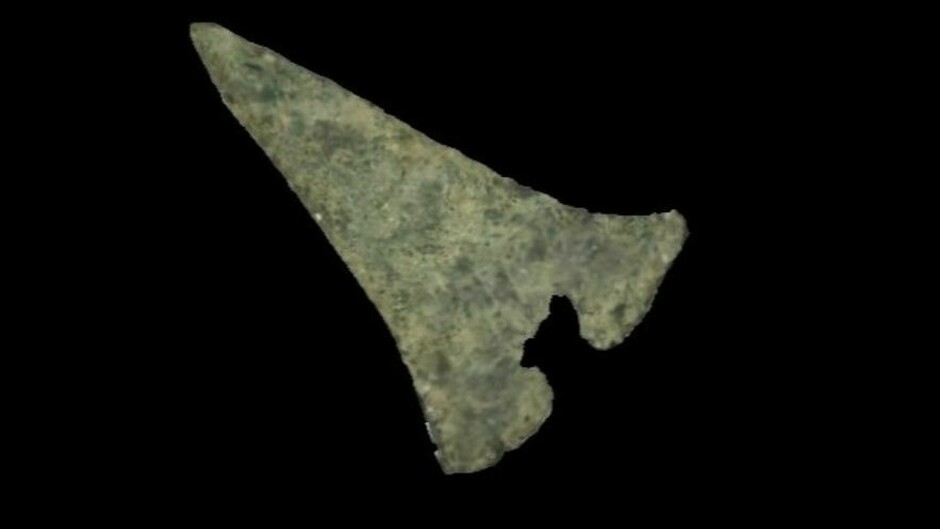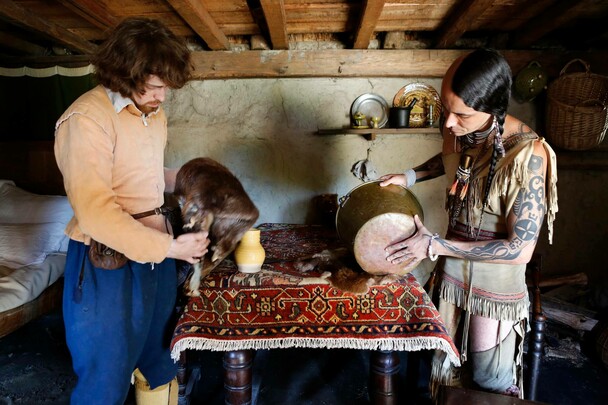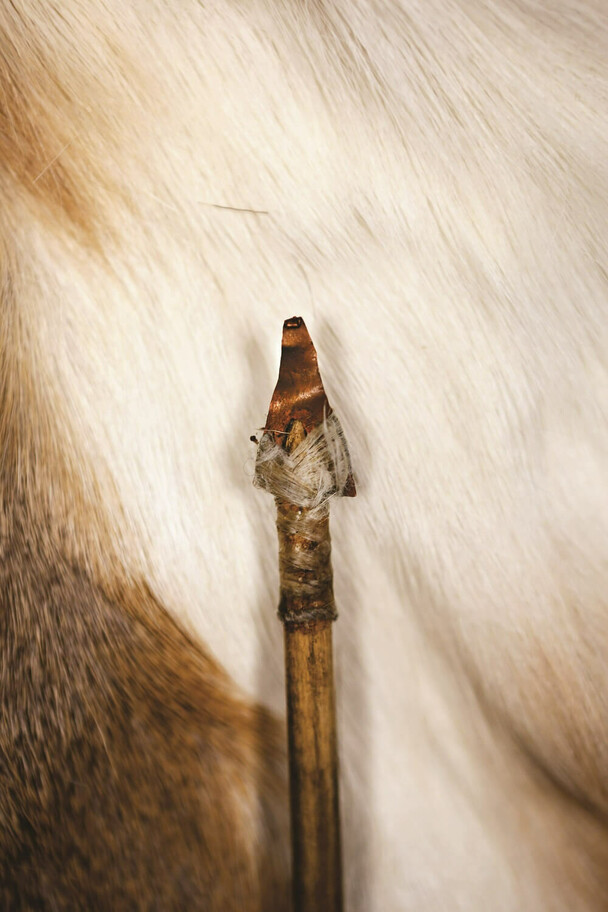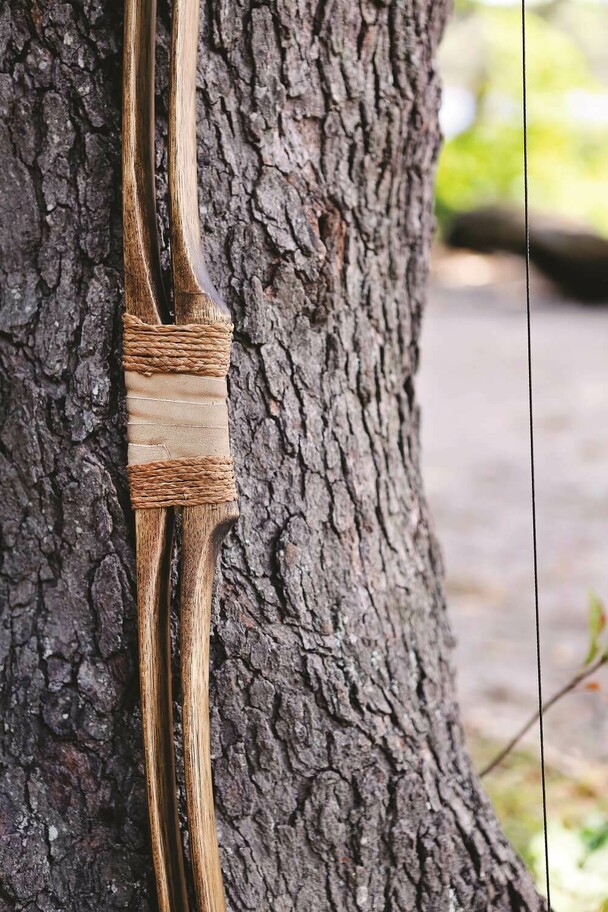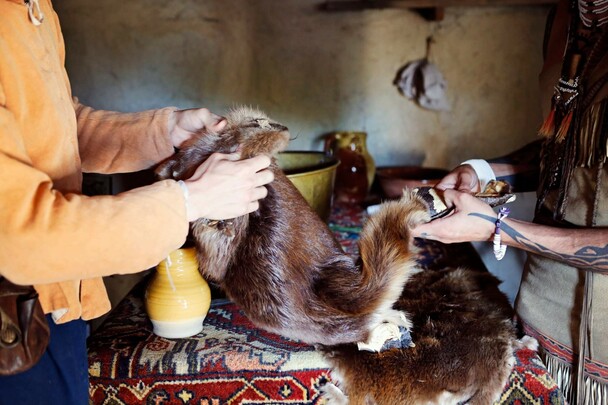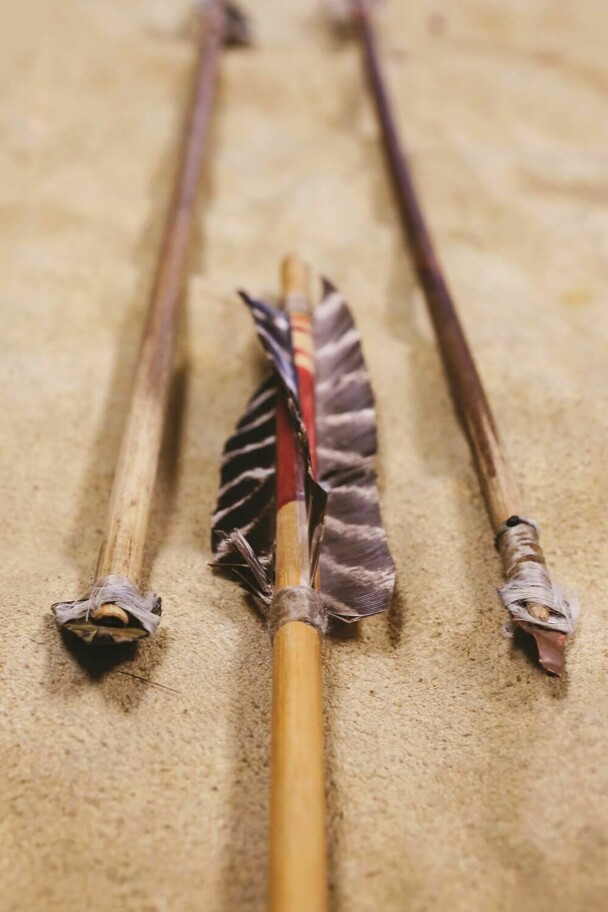Brass Point
Object ID: C1.1453
- Date
- Early Contact Period, 500+ Years Ago
- Material
- Metal, Brass
- Author/Maker
- Artist's name is no longer known.
- Source
- Plimoth Patuxet Museums Archaeology Collection
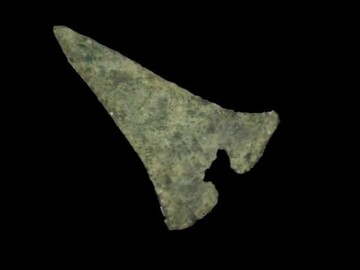
Description
This projectile point was made from a sheet of brass pounded flat and cut from a kettle, which was likely obtained through trade with the English. When Europeans traded copper and brass kettles, Indigenous people quickly adapted, incorporating the new materials into their own processes. They often re-purposed the metal by cutting it into tools. A brass point, for example, functioned the same as the stone points the Wampanoag made for thousands of years. Some metal points had holes in them, which may have been used to attach the point to a shaft to make them easier to retrieve, or to string them up for transport.
William Wood describes the use of metal points on arrows in 1634: “Their bows they make of a handsome shape, strung commonly with the sinews of mooses: Their arrows are made of young eldern, feathered with feathers of eagles’ wings and tails, headed with brass in shape of a heart or triangle, fastened in a slender piece of wood six or 8 inches long.”1 Roger Williams also observed: “They will set ashoppog (net/s) across some little river or cove and kill bass (at the fall of the water) with their arrows or spears, especially if headed with iron, gotten from the English.”2
Media
Touch the screen or use your mouse to manipulate the archaeological artifact. What do you notice when you look closely?
Discussion Questions
-
Why do people trade? How is trading different from sharing?
-
How did Wampanoag people adapt goods received in trade for their own use?
-
What else do you think Wampanoag people and Europeans traded?
-
Compare the brass point to the Hardaway-Dalton point. How did Wampanoag technology evolve over time? What is the same? What is different?
-
What impact did trade with European fishermen, explorers and later colonists like the Pilgrims have on Wampanoag daily life?
Footnotes
- 1 William Wood, New England’s Prospect (London: John Dawson for John Bellamy, 1639), 77. (Spelling modernized by Plimoth Patuxet Museums.)
- 2 Roger Williams, A Key into the Language of America Tomaquag Museum Edition.. Dawn Dove, Sandra Robinson, Loren Spears, Dorothy Herman Papp, and Kathleen Bragdon, ed.(Yardley, PA: Westholme Publishing, 2019), 100
